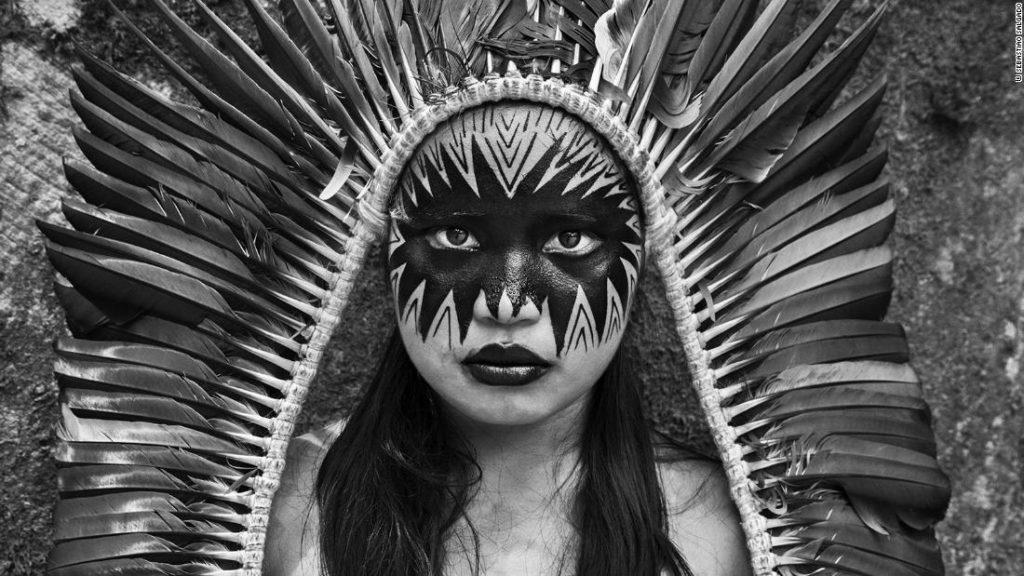Except the planet will only bend so much. At some point it must break. Salgado, who spent much of his first act as a photographer recording the tail end of a global industrial revolution, has devoted his second to capturing what could yet be lost should urbanization, rampant consumption, climate change and societal indifference go unchecked.
Deep into his seventies, Salgado is not letting up, turning his lens on his nation’s greatest treasure: Amazonia. According to his publisher it may well be the final project of this scale the venerable Brazilian undertakes.
“We are presenting a different Amazonia,” he tells CNN. “There are no fires, no destruction — the Amazonia that must stay there forever.”
Salgado has ventured into the Amazon since the 1980s, fostering relationships with some of its tribes, of which there are 188 in Brazil alone, he writes in the book. Some, like the Yanomami, he has returned to over decades, while he has enjoyed privileged access to others, becoming the first non-indigenous person to visit every village of the Zo’é people, Salgado says. For “Amazonia” he spent nine years and 48 trips disappearing into the forest for weeks, sometimes months at a time, returning with new stories and feelings of communality. “When we come to work with these tribes, we come home,” he says.
Sebastião Salgado’s Amazonian odyssey
Even if the Amazon in his photographs appears pristine, Salgado rues the rainforest already lost. “For a long time, we’ve built our society based on natural resources. We’ve destroyed,” he says. “We must protect what we didn’t destroy. We must be smart enough to survive.”
The people of Amazonia “live in total communion, total peace, with the environment,” Salgado says. They might also offer lessons: Though he describes the tribes as “the prehistory of humanity,” he also describes each as a potential “future” for the planet.
“We cannot build our future — the future of humanity — based only on technology,” he adds. “We must look at our past; we must take into consideration anything that we did in our history. Human beings have a huge opportunity: the prehistory of humanity is in Amazonia now.”
When it comes to environmentalism, Salgado cannot be accused of empty talk. For years he has practiced what he preached through the Instituto Terra, a center he founded with wife Lélia. The site in the Atlantic Forest, southeast Brazil, was once his parents’ cattle farm, and as pasture had become an ecological “desert,” he admits. Since 1999, the couple and a growing team of staff have planted more than 3 million trees covering 300 species, and watched the wildlife flood in. “It was a kind of miracle,” he says. “With the trees, the insects, the mammals, every kind of bird, every kind of life was coming back.”
Over 700 hectares has been entirely reforested and the institute’s work is helping the recovery of close to 2,000 springs in the Atlantic Forest. Salgado says the model is as relevant to Brazil as it is drought-hit California: “We must rebuild the source of water; one way is to plant trees.”
“We can rebuild the planet that we destroyed, and we must,” he adds.
But despite all the positives that come from his photography, Salgado remains ambivalent as to its power. “I don’t believe that pictures can change anything,” he says. “The picture alone is just something to see.” However, he says in the case of Amazonia, combining them with the work of environmental institutions can “incite a movement.”
The moment is one of great urgency. In his introduction to the book, the photographer communicates his sincere wish that “in 50 years’ time this book will not resemble a record of a lost world.”
Through its publication, in more than one way, he’s doing all he can to ensure that doesn’t come to pass.
You may also like
-
Afghanistan: Civilian casualties hit record high amid US withdrawal, UN says
-
How Taiwan is trying to defend against a cyber ‘World War III’
-
Pandemic travel news this week: Quarantine escapes and airplane disguises
-
Why would anyone trust Brexit Britain again?
-
Black fungus: A second crisis is killing survivors of India’s worst Covid wave



